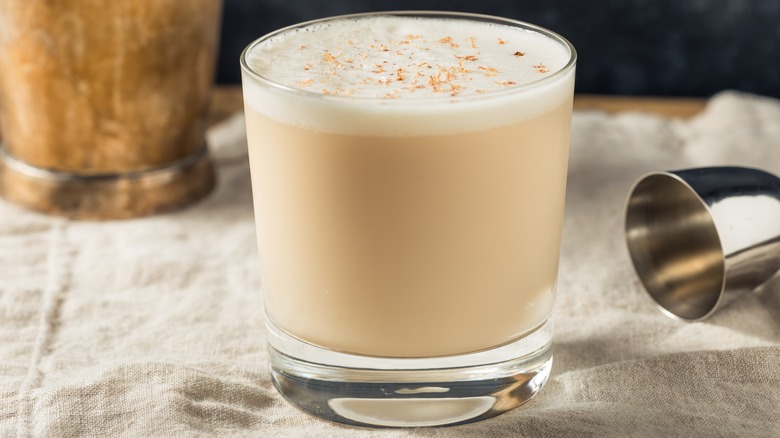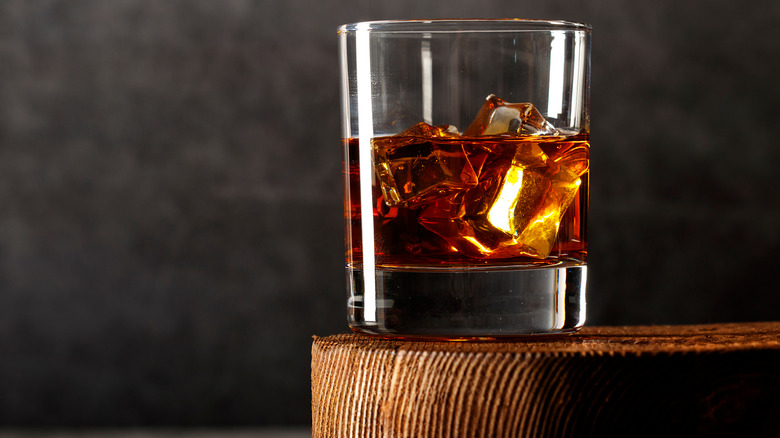Milk Punch Is The Brandy Cocktail That Dates Back To The 1700s
Chances are you haven't been scouring the internet for hours in an attempt to find a great curdled milk cocktail recipe. We know, it sounds a bit off-putting and questionable, but milk-washing is actually nothing more than clarifying a drink — and you'd be surprised to hear that the result is a clear liquid. Many bartenders find the technique a bit intimidating (because come on, curdled milk), but all you need to master a clarified milk punch cocktail is your ingredients and a simple cheesecloth. The earliest recordings of the drink date back to the 1700s, such as one recipe written by Benjamin Franklin in 1763. Though Franklin did not invent the milk-washing process — that title is said to belong to a 1711 housewife named Mary Rockett — his new version was a citrusy take with plenty of lemons.
In a nutshell, milk punch is a milk-based bourbon or brandy cocktail. Eggnog is, historically, a type of milk punch, but there are many variations of the drink. There are two types of milk punch: un-clarified milk punch, which is common in the United States South and does not involve any straining, or clarified (milk-washed) milk punch — also known as the English-style version. Clarified milk punch is born by adding in ingredients that cause the milk to curdle, which allows any lactic solids contributing to the beverage's opacity to be strained out through a cheesecloth.
The milk-washing process
Why clarify a milk-based drink? During the clarifying process, the opacity and tannins are removed, leaving you with a richly robust cocktail that is no longer overly heavy like dairy; however, all of the body and velvety textures of milk remain. This technique isn't only reserved for alcoholic beverages — you can employ milk-washing on, essentially, any cocktail or mocktail like a virgin piña colada. To begin the clarified milk punch method, the main ingredients you will need are milk, a type of spirit, and acid. Combine the spirit, which is most commonly brandy or bourbon, with spices of your choosing. Stir the mixture into warm milk and pour in an acid such as Benjamin Franklin's choice: lemon juice.
Now, you'll notice the milk thickening and curdling. After allowing the mixture to rest overnight, you'll find that the solids have sunk to the bottom of the jar. Finally, strain the liquid through a cheesecloth or other very fine strainer that you have; the color should come out clear and smooth. Of course, there are plenty of variations on ingredients, but this is the core process of milk-washing that can be used to make a range of cocktails, like pumpkin spice milk punch. Whatever ingredients you choose, be sure that the drink base is poured into the milk, not vice-versa, as this can modify results.

